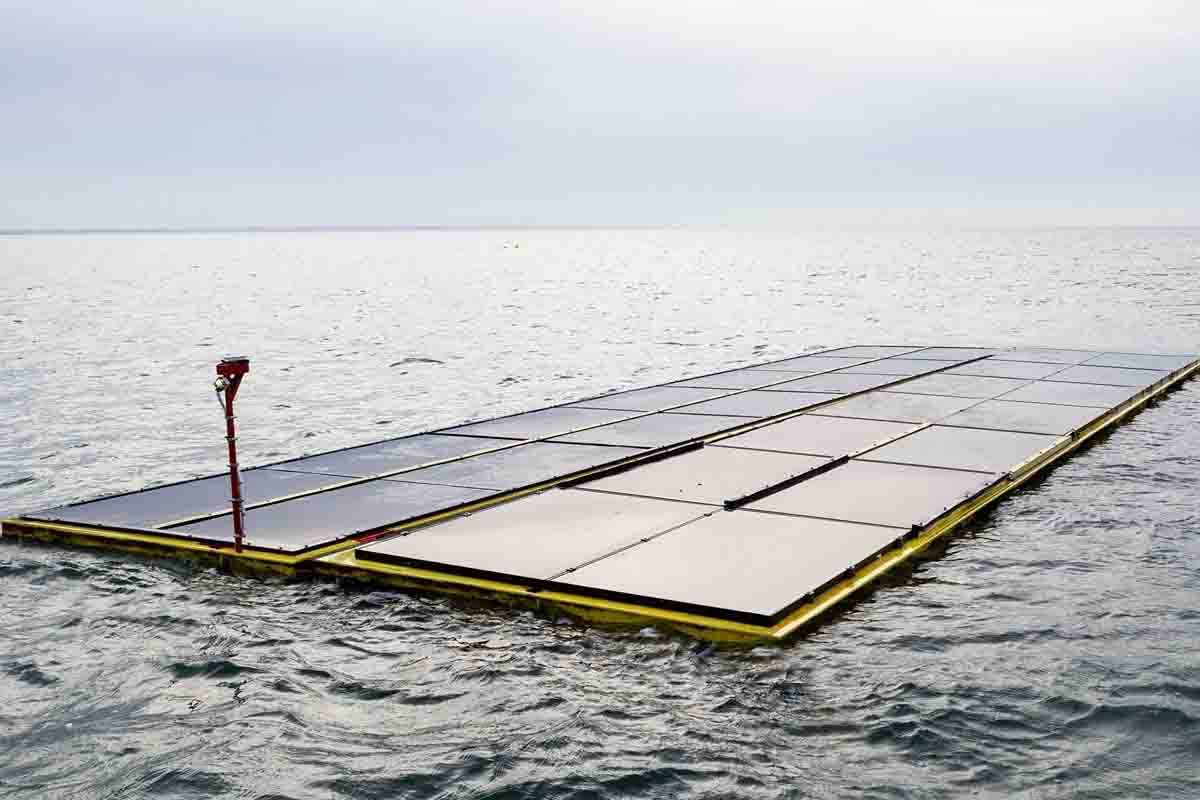China advances testing of offshore solar energy, with pioneering projects that could revolutionize the energy sector, despite technical and regulatory challenges

@oceansofenergy / Facebook
The benefits of oceanic solar energy over terrestrial solar power are significant. Land-based solar installations require large expanses of land, often far from urban or industrial centers, necessitating long-distance energy transmission. In contrast, urban and industrial centers are frequently located near coasts or lakes, making oceanic solar energy a more practical and accessible solution.
Regulatory and technical challenges
Despite the potential, the adoption of new political and regulatory frameworks is proceeding cautiously to avoid the pitfalls of past renewable energy booms and busts. Major engineering challenges include corrosion of electronic components due to saltwater exposure and the need to build structures that can withstand wave impacts and strong winds.
Chinese State-owned enterprises lead the way
Chinese state-owned companies are experimenting with solar panel installations up to 18 miles offshore. Already a global leader in renewable energy, China is looking to the ocean to meet its future energy needs through wind, waves, and tides. However, ambitious projects for large solar installations face problems ranging from rough seas to regulatory gaps, according to experts consulted by Dialogue Earth.
China’s strong supply chains could help overcome obstacles related to marine solar energy, paving the way for a new sector that leverages the vast surfaces of coastal and offshore waters worldwide to generate clean energy.
The 400 MW project in Laizhou Bay
In December, China General Nuclear Power Group began constructing a 400 MW ocean solar plant in Laizhou Bay, Shandong province. The project involves installing solar panels on poles anchored to the seabed in waters between 28 and 36 feet deep. Once completed, the plant is expected to generate 690 gigawatt-hours of energy annually.
Although the sector is still in its early stages in China, interest is growing. Last year, China added 217 gigawatts of solar capacity, more than the United States has ever done in its history, according to BloombergNEF. Only about 3 GW of this capacity was ocean-based, but interest is increasing.
Learning from past mistakes
In 2018, about 90% of the top 500 Chinese energy companies were state-owned. Most ocean solar developers are state-owned enterprises, some overseen by the central government. Two documents from the Ministry of Natural Resources have sparked discussions about the sector’s future. In November, the ministry instructed all regional maritime authorities to establish a “multi-level” administrative mechanism for approving the use of marine areas. However, shortly afterward, the Department for Marine Area Management ordered a halt to sea-use applications for ocean solar projects.
Experts believe the central government is laying the groundwork for large-scale projects to ensure their smooth development in the future. Nevertheless, building floating oceanic solar plants is much more challenging than land-based ones. Børge Bjørneklett, a Norwegian entrepreneur who invented a floating system in 2016, says fully offshore floating solar is unlikely to happen immediately due to high costs. A more promising solution is to build in semi-protected waters.
Overcoming regulatory and industrial hurdles
The lack of experience and industrial regulations is a hurdle. Establishing standards and policies will be necessary for various aspects, including sea-use permits, grid connection, environmental assessments, and project approvals. Coordination among government agencies will be crucial.
Sources: CRESA – BloombergNEF
